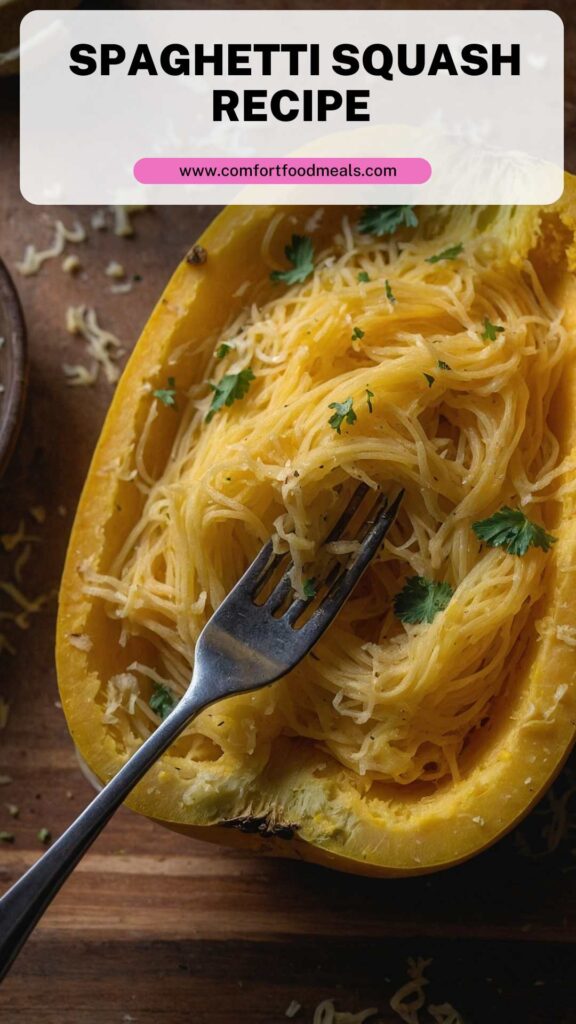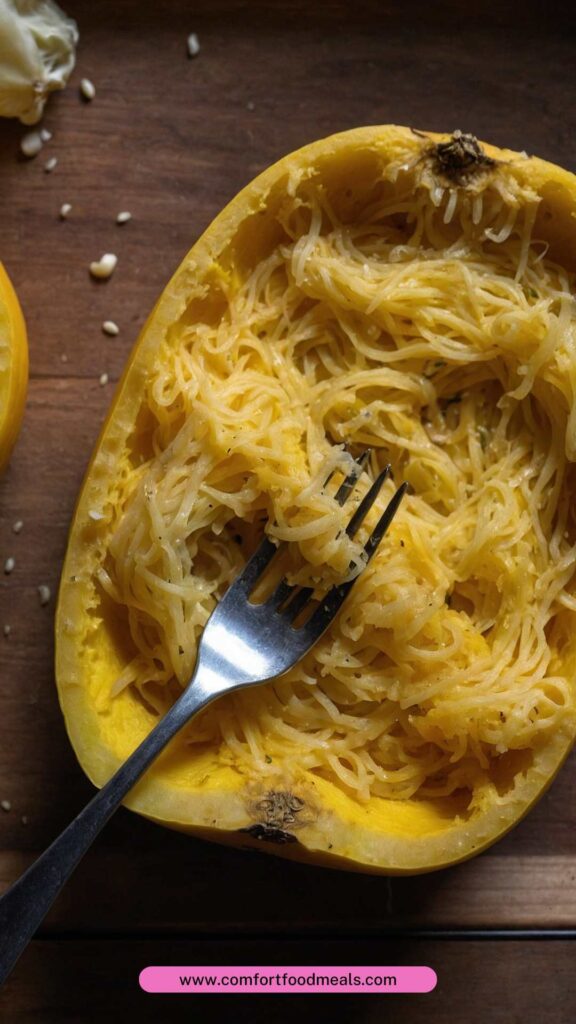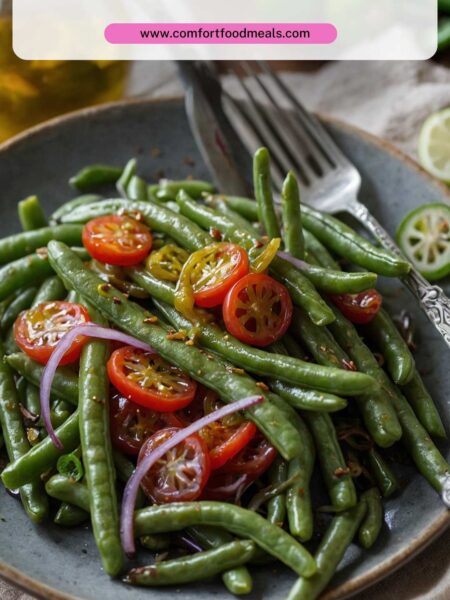Before diving into the details of spaghetti squash, let’s talk about what you can serve alongside this versatile dish. Pairing is important to enhance your meal experience. Here are a few delicious suggestions:
- Lean Proteins: Grilled chicken, shrimp, or turkey meatballs make fantastic additions. Their flavors complement the mild taste of spaghetti squash beautifully.
- Fresh Salad: A refreshing side salad loaded with seasonal veggies provides crunch and balance. Think of something with mixed greens, cherry tomatoes, and a tangy vinaigrette.
- Sauces and Salsas: A delightful tomato basil sauce or a fresh pesto can bring a zest that elevates the dish. These sauces not only add flavor but also a vibrant color to your plate.
- Bread Rolls: Warm, crusty bread rolls are perfect for scooping up the squash and sauce. They add a rustic feel to your meal.
Now, let’s get into the heart of the matter.

Welcome to the land of spaghetti squash! If you’ve ever been curious about this unique vegetable, you’re in the right place. Spaghetti squash is often hailed as a nutritious alternative to traditional pasta, offering a variety of culinary opportunities.
My journey with spaghetti squash began at a family gathering, where a cousin introduced it as a healthier option for a pasta dish. It was not just the novelty of it but the delightful taste that hooked me.
Over the years, I’ve cooked spaghetti squash in ways that will excite your palate. Whether you’re looking for a low-carb dish or simply a new way to enjoy vegetables, this recipe is bound to impress. Join me as we explore the nuances of preparing spaghetti squash and why it has become a staple in my kitchen.
You Might Also Like These Recipes!
Why This Recipe Works
When I decided to focus on cooking with spaghetti squash, I needed reasons to persuade my friends and family. Here’s what I found:
- Healthy Alternative: This dish still provides a comforting base without the excess carbohydrates of traditional pasta. It’s perfect for anyone watching their carb intake. It gives you room to indulge without guilt.
- Versatility: You can pair it with various sauces or previous leftovers in your fridge. This adaptability allows it to fit seamlessly into any meal plan. Think of the possibilities!
- Ease of Preparation: Spaghetti squash is quite simple to cook. In just a few steps, you can transform it into a flavorful dish. It’s an effortless way to impress guests, even when you’re short on time.
- Rich in Nutrients: Spaghetti squash is loaded with vitamins A and C, potassium, and fiber. Your body will thank you for choosing a nutrient-dense option that’s also delicious!
How Does It Taste Like?
Imagine the taste of spaghetti squash as a mild canvas for flavors. It has a subtle sweetness and a slightly nutty flavor, which makes it unique. The texture is often described as stringy, mimicking the feel of traditional pasta. You can season it with herbs and spices, or enjoy it plain. If you’re like me, you might find it strangely satisfying to twirl those ‘noodles’ with a fork. It’s a delightful experience that could potentially trick your taste buds into believing they’re having pasta.
What Sets This Recipe Apart from Other Spaghetti Squash Variations?
What makes my approach to spaghetti squash stand out is its emphasis on original flavors and methods. While many recipes focus on mixing it with store-bought sauces, I prefer crafting a homemade touch. This recipe features fresh ingredients, elevating the squash with an exciting blend of tastes. Here’s how this recipe defies the ordinary:
- Homemade Dressings: Instead of using pre-packaged sauces filled with preservatives, I like to prepare my dressings using extra virgin olive oil and fresh herbs, providing a pure flavor profile.
- Flavor Boosting Ingredients: A splash of lemon juice and fresh garlic enhances the flavors, ensuring your dish is anything but plain.
- Customizable: You can personalize this dish with your favorite veggies or proteins, making it suitable for various diets and preferences.
The Ingredients
Here’s what you’ll need to get started on this delicious spaghetti squash dish:
- 1 medium spaghetti squash (3 to 4 pounds): The star of the show!
- 1 small garlic clove, minced: For that sweet and savory depth.
- 2 tablespoons extra virgin olive oil: A high-quality oil elevates your dish.
- 3/4 teaspoon sea salt: Enhances flavor, adjust to taste.
- 1/4 teaspoon freshly cracked black pepper: Adds warmth and dimension.
- 1 teaspoon dried Italian herbs: Provides aromatic notes, tying everything together.
Instructions
Let’s get cooking! Here’s a straightforward guide for getting that spaghetti squash on the table.
Step 1: Preheat the Oven
Start by preheating your oven to 400°F (200°C). This ensures the squash cooks evenly and gets lovely roasted flavors.
Step 2: Prepare the Squash
Carefully slice the spaghetti squash in half lengthwise. Use a spoon to scoop out the seeds and stringy insides. Drizzle the cut sides with olive oil, then sprinkle with salt, pepper, and minced garlic.
Step 3: Roast the Squash
Place the squash halves cut-side down on a baking sheet lined with parchment paper. Roast for about 30 to 40 minutes or until the flesh is tender. You can check by using a fork; it should easily pierce through.
Step 4: Scrape the Noodles
Once the squash is cool enough to handle, flip it over and use a fork to scrape the flesh, creating noodles. You’ll be surprised at how well it mimics spaghetti!
Step 5: Season and Serve
Toss the spaghetti squash noodles with more olive oil, Italian herbs, and any additional toppings or sauces you prefer. Enjoy it warm!

Notes
Here are five handy tips to make your spaghetti squash experience even better:
- Don’t Rush the Roasting: Letting it roast longer enhances caramelization. A golden hue brings out more flavor.
- Experiment with Toppings: Try different sauces or cheeses to find your favorite combinations.
- Microwave Option: If you’re in a hurry, you can microwave the squash. This will save you time, but oven roasting brings out the best texture.
- Use Leftovers Creatively: Leftover spaghetti squash is fantastic in soups or omelets. Get creative with your meals!
- Choose a Perfect Squash: Look for a squash that’s firm with a uniform color. Avoid any with soft spots.
Nutrition Information
A one-cup serving of cooked spaghetti squash has approximately:
It’s low in calories while being rich in essential vitamins, making it an excellent dietary choice.

How Do You Store This Spaghetti Squash?
Storing spaghetti squash properly is essential for ensuring freshness. Here’s how you can do that:
- In the Refrigerator: Once cooked, keep leftovers in an airtight container in the fridge for up to 5 days.
- Use within a Week: If you’ve not cooked the squash, it can last about a week in a cool place.
- Freezing: You can freeze cooked spaghetti squash for longer storage. Just place it in a freezer-safe bag, and it will keep for about 3 months.
Sides for Spaghetti Squash
Looking to round out your meal? Consider these tasty sides:
- Garlic Bread: The crunch of buttery garlic bread pairs exceptionally well, giving that satisfying contrast to the softness of the squash.
- Grilled Veggies: A mix of bell peppers, zucchini, and asparagus tossed in olive oil and seasonings make a colorful accompanyment.
- Caesar Salad: The crunch of romaine with creamy dressing compliments the richness of the squash, making this duo perfect for a balanced meal.
What Alternatives Can You Use for the Ingredients?
Sometimes, you might not have everything on hand. Here are alternatives for commonly used ingredients:
- Spaghetti Squash: Zucchini noodles or even butternut squash can provide a similar texture.
- Extra Virgin Olive Oil: Avocado oil or melted coconut oil can also be a smart substitute.
- Garlic: Garlic powder or shallots can add similar flavors if fresh garlic isn’t available.
- Italian Herbs: A mix of dried oregano, basil, or thyme can substitute if you lack pre-mixed herbs.
Conclusion
Spaghetti squash has a charm that stands strong. It not only balances health and taste but also provides endless meal options. The journey with this squash has opened up numerous doors, allowing me to experiment in the kitchen creatively.
By focusing on fresh ingredients and unique flavors, this spaghetti squash dish can easily transition from a healthy substitute to a beloved culinary creation. Trust me, once you try this recipe, you’ll view spaghetti squash in an entirely new light. So here’s to delicious cooking adventures ahead!
You Might Also Like These Latest Recipes!

Spaghetti Squash Recipe – Comfort Food Meals
Description
Welcome to the land of spaghetti squash! If you’ve ever been curious about this unique vegetable, you’re in the right place. Spaghetti squash is often hailed as a nutritious alternative to traditional pasta, offering a variety of culinary opportunities.
My journey with spaghetti squash began at a family gathering, where a cousin introduced it as a healthier option for a pasta dish. It was not just the novelty of it but the delightful taste that hooked me.
Ingredients
Instructions
-
Let’s get cooking! Here’s a straightforward guide for getting that spaghetti squash on the table.
Step 1: Preheat the Oven
-
Start by preheating your oven to 400°F (200°C). This ensures the squash cooks evenly and gets lovely roasted flavors.
Step 2: Prepare the Squash
-
Carefully slice the spaghetti squash in half lengthwise. Use a spoon to scoop out the seeds and stringy insides. Drizzle the cut sides with olive oil, then sprinkle with salt, pepper, and minced garlic.
Step 3: Roast the Squash
-
Place the squash halves cut-side down on a baking sheet lined with parchment paper. Roast for about 30 to 40 minutes or until the flesh is tender. You can check by using a fork; it should easily pierce through.
Step 4: Scrape the Noodles
-
Once the squash is cool enough to handle, flip it over and use a fork to scrape the flesh, creating noodles. You’ll be surprised at how well it mimics spaghetti!
Step 5: Season and Serve
-
Toss the spaghetti squash noodles with more olive oil, Italian herbs, and any additional toppings or sauces you prefer. Enjoy it warm!
Nutrition Facts
Servings 4
- Amount Per Serving
- Calories 36kcal
- % Daily Value *
- Total Fat 3.1g5%
- Saturated Fat 0.4g2%
- Cholesterol 2mg1%
- Sodium 497mg21%
- Total Carbohydrate 2g1%
- Dietary Fiber 1g4%
- Sugars 1g
- Protein 1g2%
* Percent Daily Values are based on a 2,000 calorie diet. Your daily value may be higher or lower depending on your calorie needs.
Note
Here are five handy tips to make your spaghetti squash experience even better:
- Don’t Rush the Roasting: Letting it roast longer enhances caramelization. A golden hue brings out more flavor.
- Experiment with Toppings: Try different sauces or cheeses to find your favorite combinations.
- Microwave Option: If you’re in a hurry, you can microwave the squash. This will save you time, but oven roasting brings out the best texture.
- Use Leftovers Creatively: Leftover spaghetti squash is fantastic in soups or omelets. Get creative with your meals!
Choose a Perfect Squash: Look for a squash that's firm with a uniform color. Avoid any with soft spots.





